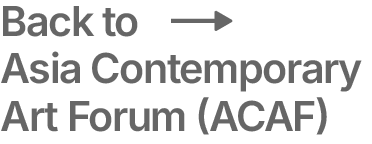Interview with Nurjahan Akhlaq
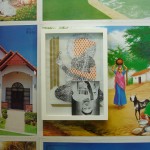
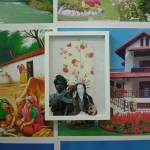
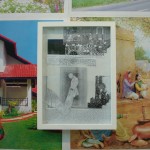
1. How did you start making art?
I’ve been around it all my life. My dad was a painter and my mother is a ceramist, so it was encouraged early on…
I got interested in film and photography when I was about 15, discovered all the cool things that you could do with the camera and in a dark room in high school, and that’s what I ended up studying and practicing before considering/making art at the graduate level.
2. Briefly describe your art from the perspective of what it could tell us about you?
The collage and installation that I’m interested in now is not anything I’d have considered interesting four years ago. I suppose that means the way I think about making work has undergone a big shift.
The collages use ordinary materials and they parody the fashion of miniature painting that has become a sought after genre of contemporary painting from Pakistan, especially in the international art market. Its even considered a movement of sorts. There are some amazing artists developing their work in this way, but I was more interested in the way that the contemporary miniature has become fetishized. Also what it implies in terms of taste, and painterly skill and all the rest is an important thing for me. The collages were also inspired by certain political events that happened in Pakistan last year.
The other thing I am really interested in is the urban kitsch of Lahore, which is where the wallpaper made from posters comes in. I’m fascinated by the recycled imagery, the sloppy photoshop work, and the romanticism. This says a lot about the culture especially in relation to what is happening there politically, and I’m very interested in using that in my work.
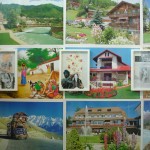
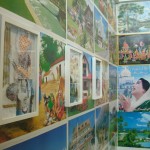
3. What experiences have most influenced your choice of subject matter medium and style?
Growing up in Lahore in the 80’s. Moving between the developing and the developed world from a young age. Discovering my grandfather’s archive of photographs and travelogues at 12. All these things are pretty significant with recent projects.
4. Is your formal or informal training as an artist useful? How?
That’s a really good question. Everyone is marked by the ideologies of the institutions that they have been associated with. It is useful to some degree because it gives you a framework and structure, particularly useful at a basic level. But it is probably more important to undo that training, or develop your work beyond what they’ve set you up for.
5. Does your work reflect issues in yourself, in society or community?
Probably all of the above.
6. Do you appreciate culturally specific works of art? If so how does your personal and cultural background show up in your work?
In a way every work of art is specific to a culture and time and place, whether its Gordon Matta Clark splitting a house in two pieces, or Yinka Shonibare’s Victorian dresses that he commissions a seamstress to make with African fabric.
If you mean in terms of heritage and cultural background, I’m not sure how that works without getting clichéd in a world and an art system which is pretty international and lets face it, has it an audience that is quite jaded. But some artists have been very clever at dealing with these issues in their work, which is pretty cool and inspiring.
Yes, my personal and cultural background does play a part in my work. The collage work specifically deals with miniature painting and the poster’s with a particular kind of Lahori kitch… Before I dealt with these things and used them in my work a lot of people tended to project an ethnicity that I hadn’t intended, regardless, so it can be a pretty tricky thing.

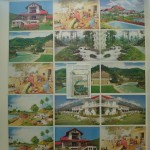
7. Is there anything you would like to say about your local art scene or the international art market, art education, and or system for art exhibition?
A lot. It would exceed the word count for this interview so I’ll maybe I should start a blog or write a pamphlet.
8. How does your current portfolio fit into the rest of your body of work?
I’m still dealing with a new conceptual direction that I started last year, so its quite different from work I was developing in film and photography and also in terms of what its about. But there are probably a lot formal similarities that you can see as thread.

